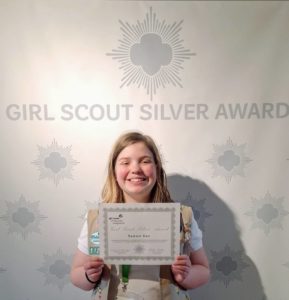This summer I have a unique opportunity through the Belin-Blank Center in Iowa to learn about Japanese culture with Kazumi Wilds, MFA in Book Art and award-winning illustrator of multiple children’s books about Japan! Learning How to Write a Haiku was on the agenda!
In this class, we will explore Japanese history, culture, and society through her books, The Peace Tree from Hiroshima (2014) and All About Japan (2011), and others. Students take a hands-on approach to explore various aspects of daily life in Japan, including language and calligraphy, food and tea, books and manga, festivals and folk tales, and U.S.-Japan relations. We will take field trips to the University of Iowa Asia Library to read manga in English, and to the Library Special Collections to experience reading traditional Japanese books and illustrated hand scrolls in person. Other activities include writing calligraphy and name-stamp carving, creating a small handmade book for composing haiku poetry, among others.

Haikus are traditional Japanese three line poems written in a 5-7-5 syllable format. Writing a haiku sounds pretty simple, right? A cumulative 17 syllable poem should be a breeze, but looking at the history of haikus and how to make those syllables work for you will really help you learn how to write a haiku.
Haiku History
Haikus started in the early 17th century in Japan. Matsuo Bashō is considered Japan’s originator of the haiku. It was first called a hokku but became known as a haiku in the 19th century. The hokku was the first verse of a linked poem called a renku, but it eventually stood on its own to become the three-lined form known as the haiku. Most early haikus focused on nature.
Modern Haikus
Today, haikus can still be about nature, but they are so much more. Writing haikus can be a way to practice vocabulary development, recognizing syllables, and even reflecting on life. Even though haikus originate in Japan with roots in all things Mother Earth, today’s haikus can really be about any subject.
Choose a Topic
As with any form of poetry, writing a haiku starts with choosing a topic. Brainstorm a list of things to write about or focus on a certain area in your studies. When I am reading a novel, I may write a haiku about the protagonist like this one about Katniss Everdeen from The Hunger Games series.
Tribute volunteer
Child born in poverty
Mockingjay rises
You can even write haikus about math! Geometrical concepts make for great haikus.
Perimeter square
Add all four sides together
Boundary of square
Figure syllables
Syllables are literally the number of vowel sounds in a word. Haiku has the vowel sound long i (hai) and the vowel sound oo (ku), so it has two syllables. The easiest way to count syllables is by verbally reciting the words in a poem and counting them on your fingers. Other ways include clapping out the beats or drumming the parts of the word.
After I come up with a subject for my haiku, I jot down words related to the topic, and then put them all together to form my 5-7-5 poem. I love to create multiple haikus to put together in stanzas. If you’re really creative, you may consider illustrating your poems with artwork like simple drawings, watercolor, or photographs.
Learning how to write a haiku doesn’t have to be overwhelming. By studying the history of haikus, choosing topics (beyond the historical nature haikus), and counting syllables, can help you start writing haikus like a masterful poet. Practice writing haikus to reflect and study different topics.
Check out some of my other free printables:

What Visiters Had To Say